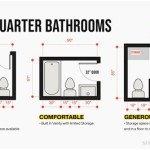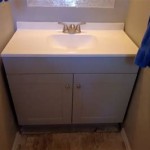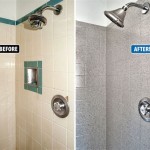How to Safely Remove a Long Bathroom Light Fixture Junction Box
Removing a long bathroom light fixture junction box requires careful attention to safety and proper electrical procedures. This guide provides a step-by-step approach to the removal process. Always prioritize safety and consult a qualified electrician if any uncertainty arises.
Essential Safety Precautions
Working with electrical wiring necessitates stringent safety measures. Neglecting these precautions can lead to serious injury or damage.
- Turn off the power: Locate the correct circuit breaker in the electrical panel and switch it off. This is the most critical safety step.
- Verify power is off: Use a non-contact voltage tester to double-check that the power is off at the fixture wires.
- Use insulated tools: Employ insulated screwdrivers, wire strippers, and other tools to prevent electrical shock.
- Wear safety glasses: Protect eyes from debris and potential sparks.
- Have a helper: An extra set of hands can be invaluable, especially when handling heavy or awkward fixtures.
Disconnecting the Light Fixture
Once the power is confirmed off, the next step is to disconnect the light fixture from the junction box.
- Remove the light fixture cover: Depending on the fixture design, this may involve unscrewing finials, loosening clips, or removing decorative nuts.
- Detach the fixture from the mounting bracket: Typically, screws secure the fixture to a mounting bracket attached to the junction box. Remove these screws carefully.
- Lower the fixture carefully: Support the fixture while disconnecting the wires. A helper can be especially useful here.
Disconnecting the Wiring
Carefully disconnect the wiring, noting the connections for later reinstallation if needed.
- Identify the wires: Typically, black wires connect to black (hot), white to white (neutral), and bare copper or green to ground.
- Unscrew the wire connectors: Carefully unscrew the wire connectors (wire nuts) joining the fixture wires to the house wiring.
- Separate the wires: Gently separate the wires after disconnecting them, ensuring they don't touch.
Detaching the Junction Box
With the wiring disconnected, the junction box can be removed from its mounting.
- Identify the mounting method: The junction box might be secured with screws, nails, or clamps. Determine the method used before proceeding.
- Remove the securing fasteners: Carefully remove the screws, nails, or loosen clamps holding the junction box in place.
- Gently pull the junction box away: Once the fasteners are removed, carefully pull the box away from the ceiling or wall.
Addressing the Wiring After Removal
After the junction box is removed, the exposed wiring needs to be addressed safely.
- Cap the wires: Use wire nuts to cap off the exposed wires. This is crucial for safety. Ensure each wire is individually capped and secured.
- Secure the wires: Carefully fold the capped wires back into the electrical box opening and secure them with an approved fastener so they don't fall back inside the wall or ceiling cavity.
- Close the opening: If you are not installing a new fixture, close the opening in the ceiling or wall with an appropriate cover plate.
Considerations for Long Fixtures
Long fixtures may present some specific challenges during removal.
- Weight distribution: Longer fixtures can be heavier. Ensure adequate support during removal to prevent damage or injury.
- Multiple mounting points: Some long fixtures may have multiple mounting points along their length. Each point will need to be detached carefully.
- Wiring complexity: Long fixtures may have more complex wiring. Document the wiring connections carefully before disconnecting.
Working with Fluorescent Fixtures
If the long fixture is fluorescent, there are additional considerations.
- Ballast removal: Older fluorescent fixtures may contain a ballast. This needs to be detached and disposed of properly. Some newer fluorescent fixtures don't require ballasts.
- Tube disposal: Fluorescent tubes contain mercury and require proper disposal according to local regulations. Do not break the tubes.
Patching and Repairing the Ceiling
After removing the fixture, the ceiling or wall will likely require patching and repair.
- Assess the damage: Examine the area for any damage caused by the removal. This may include holes from screws or cracks in the drywall.
- Patching the holes: Use spackling compound to fill any holes and allow it to dry completely.
- Sanding and painting: Sand the patched area smooth and repaint to match the surrounding ceiling or wall.

How To Install A Vanity Light And Electrical Box Chic Misfits

How To Replace A Hollywood Light With 2 Vanity Lights

How To Install A Vanity Light And Electrical Box Chic Misfits

How To Install A Vanity Light And Electrical Box Chic Misfits

How To Install A Vanity Light And Electrical Box Chic Misfits

How To Replace An Old Fluorescent Light Fixture Young House Love

How To Install A Vanity Light Complete Guide

How To Move An Off Center Wall Mounted Light Fixture And Repair The Drywall

How To Replace An Old Fluorescent Light Fixture Young House Love
Where Does The Ground Wire From Mounting Bracket Connect To On This Bathroom Light Fixture Please See Image Link Quora
Related Posts







